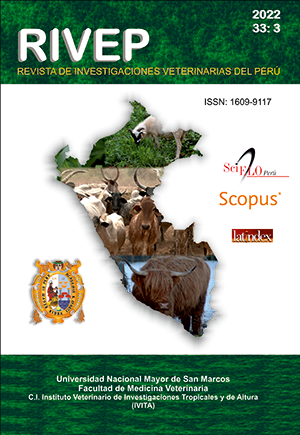Origin of dogs entered Peru during the period 2009-2018 and potential risk of introduction of exotic zoonotic agents
DOI:
https://doi.org/10.15381/rivep.v33i3.22904Keywords:
epidemic, emerging diseases, dogs, zoonosesAbstract
The aim of this study was to determine the origin of dogs admitted to Peru during the period 2009-2018 and to evaluate the potential risk of introduction of exotic zoonotic agents. The records of the National Agrarian Health Service (SENASA) of the entry of dogs into Peru in the indicated period were used. Complete information was obtained from 40 860 dogs. The results show a growing trend of annual entering of dogs to Peru, from 2273 in 2009 to 6382 in 2018, with higher frequencies in the months of December (16.2%), January (9.4%) and July (8.5%). The origins of the dogs were mainly from South America (44.3%), North America (29.4%) and Europe (17.4%), specifically from the United States (27.5%), Chile (13.4%), Argentina (11.4%) and Spain (8.8%). The main gateway was Lima International Airport (46.5%) and the and the Aero Port Control Office of the airport for dogs that entered as cargo (45.6%). The study offers information on exotic zoonotic diseases for Peru, but exotic and endemic with reservoir in dogs in the countries of origin of dogs interned in Peru
Downloads
Downloads
Published
Issue
Section
License
Copyright (c) 2022 Valeria Levaggi, Daphne León, Néstor Falcón

This work is licensed under a Creative Commons Attribution 4.0 International License.
AUTHORS RETAIN THEIR RIGHTS:
a. Authors retain their trade mark rights and patent, and also on any process or procedure described in the article.
b. Authors retain their right to share, copy, distribute, perform and publicly communicate their article (eg, to place their article in an institutional repository or publish it in a book), with an acknowledgment of its initial publication in the Revista de Investigaciones Veterinarias del Perú (RIVEP).
c. Authors retain theirs right to make a subsequent publication of their work, to use the article or any part thereof (eg a compilation of his papers, lecture notes, thesis, or a book), always indicating the source of publication (the originator of the work, journal, volume, number and date).










